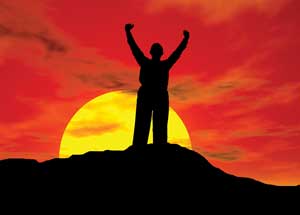
Aboriginal and Torres Strait Islander males arguably have the poorest health of any racial group in Australia. In 1999–2001, it was estimated that they have a life expectancy of 56 years (compared with 77 years for all Australians) and that 75% of Indigenous males die before 65 years of age (compared with 27% of their non-Indigenous counterparts).1 The recent media debate on the abuse of women and children in Indigenous communities unfortunately failed to highlight the very poor health status of Indigenous men and the fact that Indigenous male death rates from assault are similar to, if not higher than, the rates among females.1
There have been numerous calls for Aboriginal and Torres Strait Islander male leadership in this area. Indigenous men have themselves attempted to take on this mantle at a national level over a number of years, following the Ross River Aboriginal and Torres Strait Islander Men’s Health Conference in 1999. Indeed, a group formed at this conference produced a National Framework for Improving the Health and Wellbeing of Aboriginal and Torres Strait Islander Males2 in 2003, but this has not subsequently been implemented.
Aboriginal men’s groups have existed at a local level for many years. These groups attempt to work with Indigenous men to address the many issues facing them and their families. Rather than addressing male issues exclusively, the groups place a high priority on a “whole of family” approach. They address male roles and the loss of these — teacher, hunter and lore-man, but also father, provider, partner and community leader — and include such things as diversionary programs, domestic violence programs and parenting programs.3,4 The groups comprise grassroots Aboriginal and Torres Strait Islander men who are committed to making a difference, but they are largely unfunded and generally too poorly resourced to have the broader “systems” community approach that is known to be necessary.
In contrast with the media portrayal of Indigenous men as perpetrators of violence, the accompanying excerpt from “Do’s and Don’t’s” rules for an Aboriginal men’s group (Box) illustrates the simple principles this group has developed.3
It is simplistic in the extreme to suggest that radical changes, such as relocating all remote Aboriginal communities to urban centres, will fix the problems,5 while failing to address the underlying issues of loss of self-esteem, culture, land and identity.
In my community our men are always being put lowest down to the ground, that is why they are always fighting with each other and committing suicide, because we know that white people think we are “apes” and so forth . . .
- Mark Wenitong1
- School of Medicine, James Cook University, Townsville, QLD.
- 1. Australian Bureau of Statistics and Australian Institute of Health and Welfare. The health and welfare of Australia’s Aboriginal and Torres Strait Islander peoples. Canberra: Commonwealth of Australia, 2005. (ABS Cat. No. 4704.0; AIHW Cat. No. IHW 14.)
- 2. The National Framework for Improving the Health and Wellbeing of Aboriginal and Torres Strait Islander Males. Working Party of National Aboriginal and Torres Strait Islander Males Reference Committee, Office of Aboriginal and Torres Strait Islander Health, Australian Government Department of Health and Ageing, Canberra, Sep 2003. http://www.abc.net.au/rural/ruralhealth2003/stories/s798366.htm (accessed Sep 2006).
- 3. Tsey K, Wenitong M, McCalman J, et al. A participatory action research process with a rural Indigenous men’s group: monitoring and reinforcing change. Aust J Primary Health 2004; 10(3): 130-136. http://www.latrobe.edu.au/aipc/ajph/vol103.htm (accessed Sep 2006).
- 4. Spry F. The uncle–nephew program [abstract]. 1st National Indigenous Male Health Convention; 1999 Oct 4–5; Ross River Homestead, Northern Territory. Aboriginal and Torres Strait Islander Health Bulletin [electronic publication from the Australian Indigenous HealthInfoNet, Issue 6, 1999].
- 5. Windschuttle K. The whitewashing of Aboriginal manhood. The Australian 2006; 23 May: 12. http://www.sydneyline.com/Aboriginal%20manhood.htm (accessed Sep 2006).




